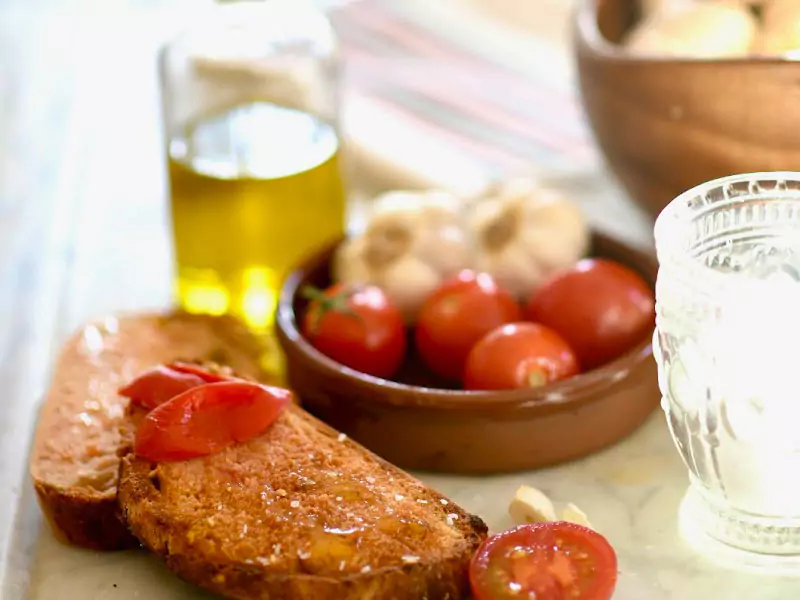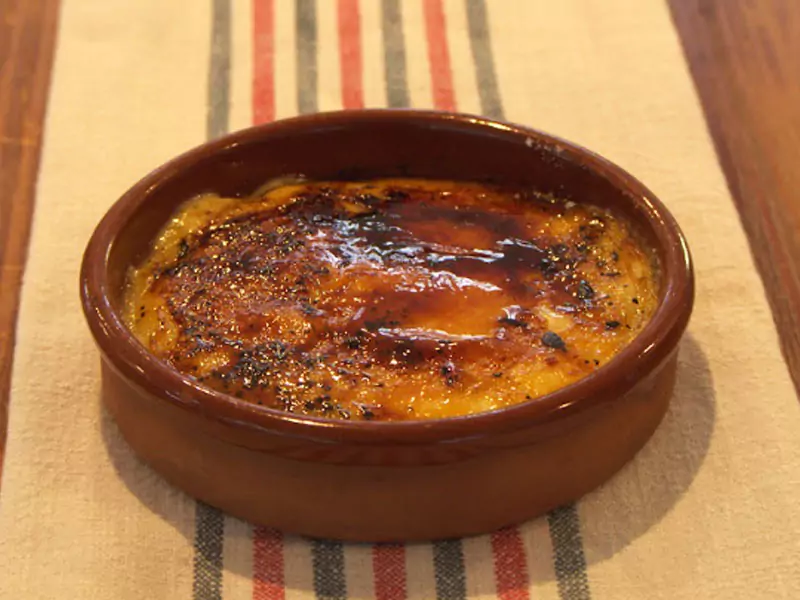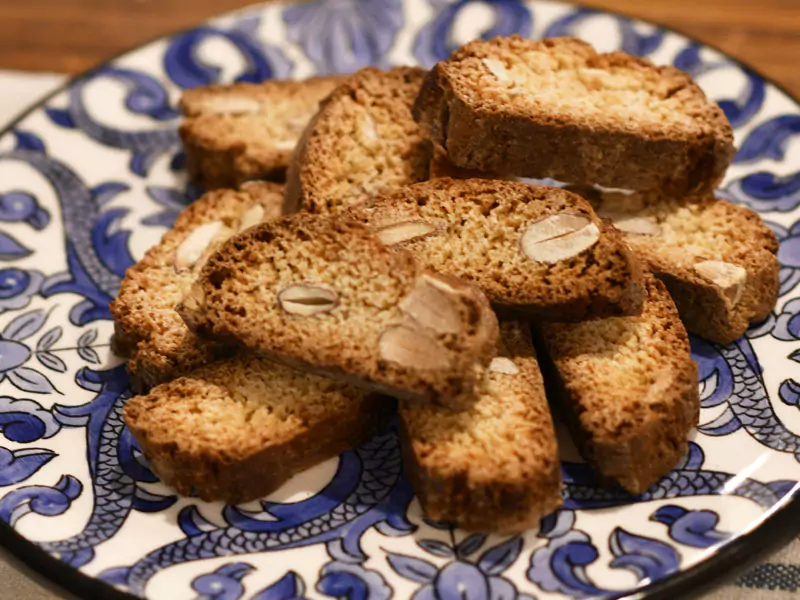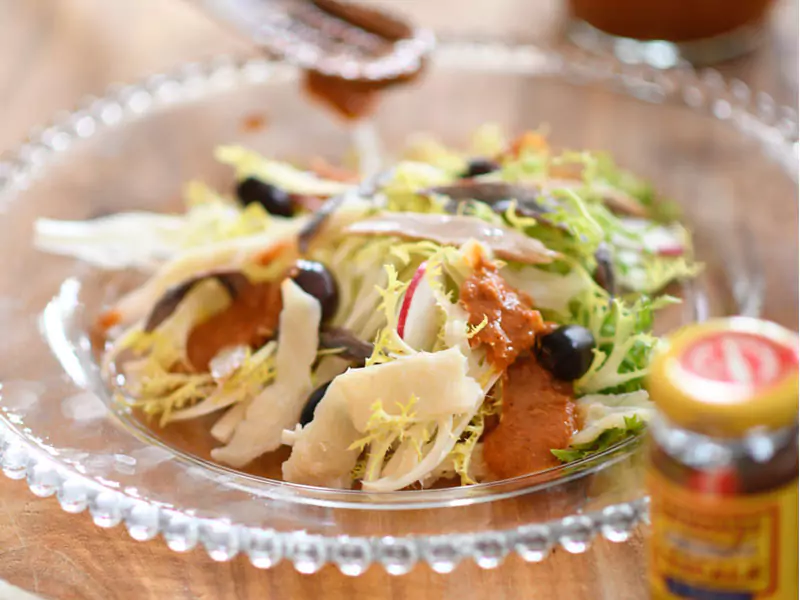Pa Amb Tomàquet
There are certain elements of Catalan cuisine that speak to who we are and where we come from, and pa amb tomàquet says it all. It conveys a sense of waste-conscious cooking, and of the very basics: bread, olive oil, sea salt, and a special variety of “hanging” tomatoes known as tomàquets de penjar. Be it breakfast, lunch, dinner, or a snack, any time is the right time for pa amb tomàquet. You’ll often find it served alongside meat, fish, sausage, or simply on its own. Catalans may put just about anything on bread—whether olive oil and sugar, wine and sugar, or olive oil and chocolate—but pa amb tomàquet reigns supreme.
HISTORY
While the exact origins of pa amb tomàquet are unknown, we might look to Nèstor Luján for a credible explanation. Luján’s thesis states that one year, after an especially abundant tomato harvest in the most rural parts of Catalonia, people began to soak their dry bread in the fruit’s juices and pulp, letting nothing go to waste. The idea of a waste-conscious cooking is an integral part of Catalan history, as seen time and time again.
TRADITIONS:
THE “HANGING” TOMATO, A TRADITIONAL CATALAN VARIETY
The hanging tomato is an age-old plant that has adapted to the particular climatic conditions of els Paisos Catalans. While there are several varieties, their key attribute is that they have not been genetically modified, unlike many other modern tomato plants, and so remain genetically identical to their wild ancestors. Unfortunately, these varieties are in the minority, but thanks to their taste, texture, and aroma, as well as their association with local and sustainable agriculture over industrial methods, their demand continues to grow.
The term “hanging,” or, de penjar, in tomàquets de penjar describes the plant’s post-harvest conservation: a group of fifteen to thirty tomatoes are knotted, strung together into bunches, then hung.



